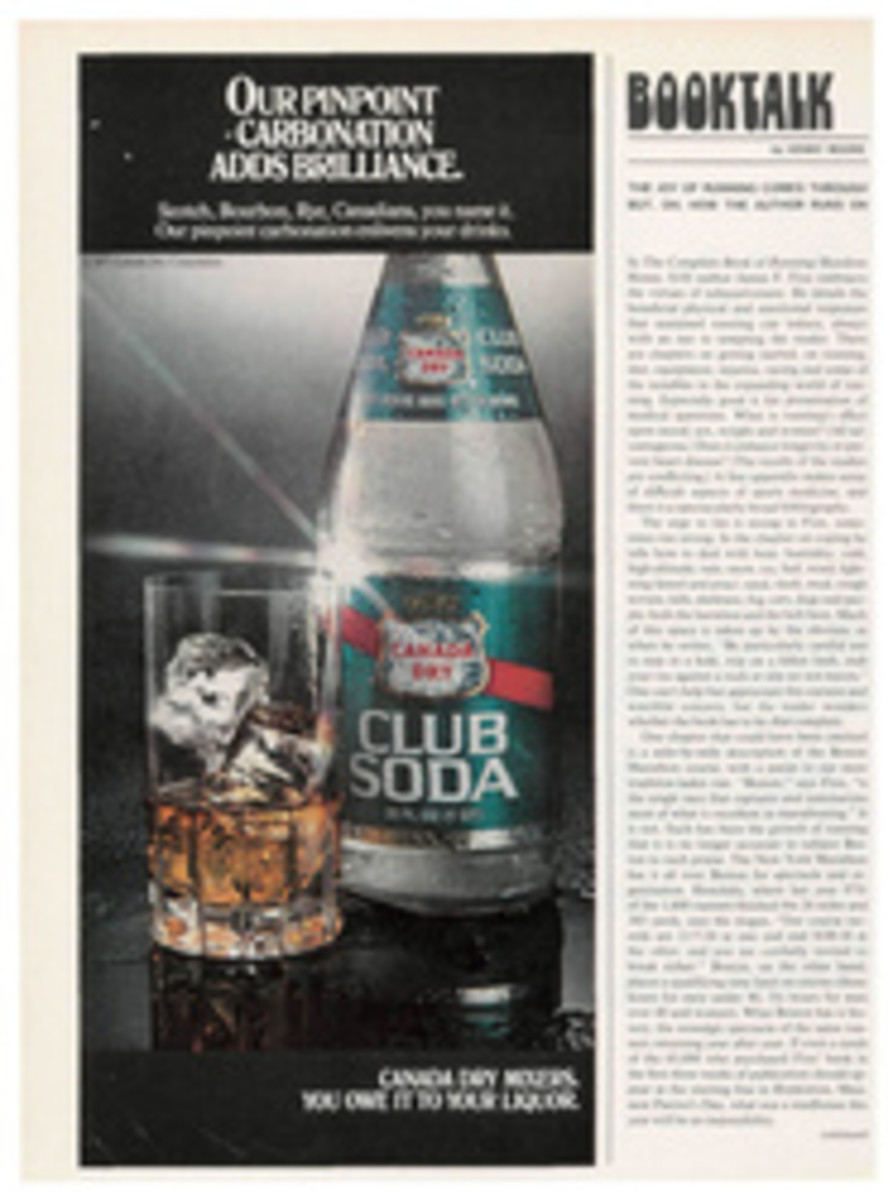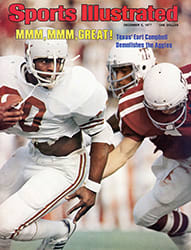
AN INDOOR FOOTBALL GAME WAS ONE OF THE SPORT'S DARKEST MOMENTS
Following the announcement of the first indoor football game in the Midwest, there were more than a few complaints and witty jabs. "Such a hothouse idea!" said one jokester. "Contrary to the spirit of the game," moaned a purist. A real rooter, he added, "prefers to tramp around in the mud or snow and yell himself into a croupy condition rather than be confined to a hard-bottomed chair and breathe a torpid atmosphere."
An advocate of the idea countered that the indoor setting "will be the most perfect arrangement for seeing a football game which has ever been devised.... It will pass into history as the best and most thoroughly viewed conflict waged on a college gridiron."
Thus the debate went, not in 20th-century Houston but in Chicago during the fall of 1896. The site was to be the Chicago Coliseum, a cavernous structure with a seating capacity of about 20,000. Because Chicago's weather often turned foul in November, then as now, city officials decided to use the Coliseum for the Thanksgiving Day game between Michigan and Amos Alonzo Stagg's University of Chicago team. The press reaction was generally enthusiastic. "Since its erection, the Coliseum has held a variety of sounds," wrote the Daily Inter Ocean. "Its iron girders have broken the war whoops of Buffalo Bill's Indians. Its arched roof has hurled back the echo of the oratory of William J. Bryan. Its walls have trembled with...the roar of campaign applause. But never was there heard in that building the loudest, most unique and picturesque noise in the universe—the college yell." Added the Tribune, "As far as the audience is concerned it might be grand opera or a Shakespearean drama.... The boxes are placed near the scene of the conflict, just as they are nearest the stage in a theater."
Besides bemoaning the playing of football indoors as a breach of tradition, opponents of the idea posed practical objections. One charge was that there would be audio difficulties for signal-callers, "that the place will reverberate with the yelling of the assembled thousands until it will be impossible to think, much less to talk." The Tribune suggested that "the eleven with a series of movements without audible signals will be the one having the advantage."
The lighting was also a subject for debate. Although the Coliseum had numerous windows, visibility in the hall tended to range from excellent to abysmal. During the summer months, the incoming light was so bright that drapes had to be placed over the windows to reduce glare. If the drapes were left in place on a dark day, however, the arena resembled a tomb.
Another controversy was over the effect confinement would have on the athletes. Outdoor advocates contended, "The pressure of an intense crowd...will pollute the atmosphere even in a structure of such massive proportions.... The players will be enervated and unable to play with snap and vigor."
As for the real possibility that a punt might hit one of the girders holding up the roof, no one seemed to know what to recommend. This eventuality was soon forgotten amid the pregame ballyhoo attending the arrival of the Michigan players, who were depicted as behemoths because they outweighed Chicago's athletes 175 pounds to 170 pounds per man. Despite this disparity, the game loomed as a "scientific test of the comparative merits of two distinct systems of play." Michigan slugged out yardage along the ground; Chicago, led by punter Clarence Herschberger, depended on a strong kicking game.
Despite a downpour outside, Chicago Coliseum was filled to near-capacity on Thanksgiving Day 1896. By no stretch of the imagination can the contest be described as a classic. One first-half play seemed to come straight out of vaudeville. Backed against its goal line, Michigan attempted to punt, but a Chicago player broke through and batted the ball out of the end zone and into the seats. "Both teams dashed after it," a reporter wrote, "and the unfortunate spectators fell over chairs to get out of the way. Halfway up, a Michigan man discovered it. He fell on the ball in the aisle, making a safety touchdown, and Chicago had scored two points."
After Chicago got the ball back, the Maroons' Herschberger drop-kicked a field goal from 45 yards out to bring the score to 7-0, field goals being worth five points in those days. Considering the style of play, such a lead seemed insurmountable, but Michigan gave it the old college try. Three times it drove within the Chicago 10-yard line only to fumble or lose the ball on downs. In the meantime, as the sky outside darkened, so did the arena until, by the second half, it was not only impossible for the fans to view the players, but it was also difficult for the players to get a glimpse of the ball. "The fullbacks were unable to see the ball and were forced to wait until it struck the ground to locate it," the Inter Ocean reported. At this juncture, Michigan put together a good drive. "It was too dark to see how," wrote a newsman, "but Michigan advanced the ball 15 yards. Somebody went around the left end for five more...then a touchdown." Unfortunately for the Wolverines, a touchdown and extra point then added up to only six points. Michigan trailed 7-6.
Eventually it became so dark that the game was halted so that the arc lights, which were suspended from the bottom of the gallery, could be turned on. During the pause, reported the Tribune, "Someone struck a match to light a cigar. Someone else thought it was done as a joke to secure a little illumination and lighted another match. Then others took it up and in a minute hundreds of matches were blazing around the entire field."
Shortly afterward, Michigan failed once again to score, and Chicago won. Attempts to analyze the success or failure of the indoor game proved inconclusive. A Michigan trainer was understandably negative. "The ground was soft and should have been underlaid with clay," he complained. "Instead it was a sandy loam mixed with fine shavings. The only place to play a football game is outdoors on the sod."
The Chicago papers gave the contest mixed notices. "There was none of the sunshine," one wrote, "none of the sparkling snow and none of the coaching parties that made last year's game spectacular. It was the close score and enthusiasm and immense crowd which marked the game. Had the day outside been pleasant, the idea of football indoors must have been pronounced a failure."
It was, in short, an idea whose time had not yet come.

